Published under the heading Fique por dentro (Look inside), intended for the infographics of pedagogical support, A composição química do ser humano (The chemical composition of the human being) appeared in the Tempo de Ciências (Science Time) manual, published by Editora do Brasil for 9th year students of Basic Education II, with hardly any modifications compared to the original infographic: Water and chemical elements.
Page(s): 288-289
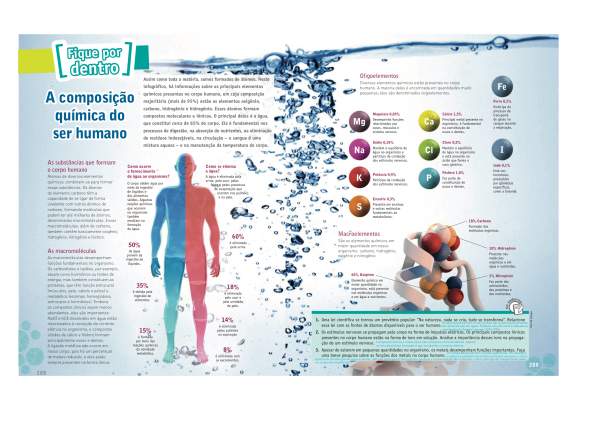
The causes and effects of acid rain, an environmental phenomenon that destroys vegetation as a result of air pollution by gases of industrial origin, were exposed in the Tempo de Ciências (Science Time) 9th year textbook, published by of Editora do Brasil, in the Fique por dentro (Look inside) section, dedicated to infographics. The initial layout of texts and graphics was visibly modified by the client.
Page(s): 332-333
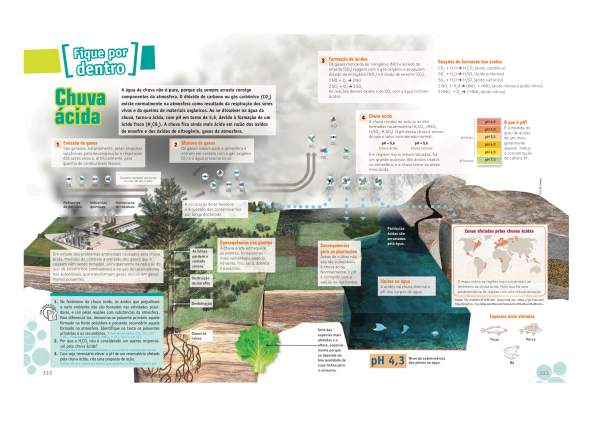
Viking navigators, merchants, conquerors and pirates also landed in the Fique por dentro (Look inside) section of the 6th year Tempo de Historia (History Time) manual. Editora do Brasil recomposed the original infographic, to which he added images and graphics of his own creation, with a remarkable result.
Page(s): 294-295
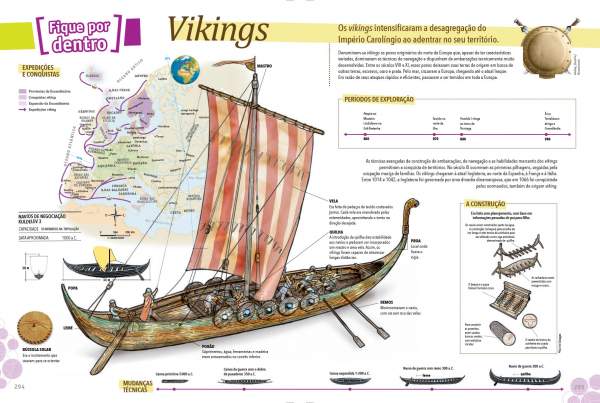
The ziggurat, the unique stepped temple of the Mesopotamian civilization, appeared among the infographics of the 6th year textbook Tempo de Historia (Time of History), published by Editora do Brasil. Unlike others inserted in the textbooks of the São Paulo publishing house, the original infographic did not undergo transformations.
Page(s): 108-109
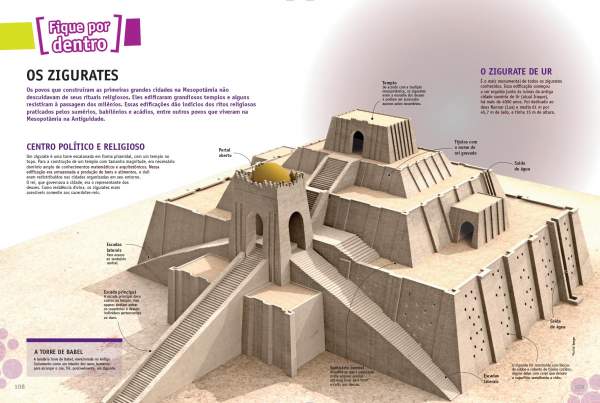
To illustrate Rome's world, the 6th year Tempo de Historia (Time of History) school manual, published by Editora do Brasil, included the infographic dedicated to the magnificent city of Pompeii, pride of the empire, devastated by the catastrophic eruption of Vesuvius of the year 79 A.C., under the reign of Emperor Titus. The São Paulo publishing house made some modifications from the original design of the infographic.
Page(s): 232-233
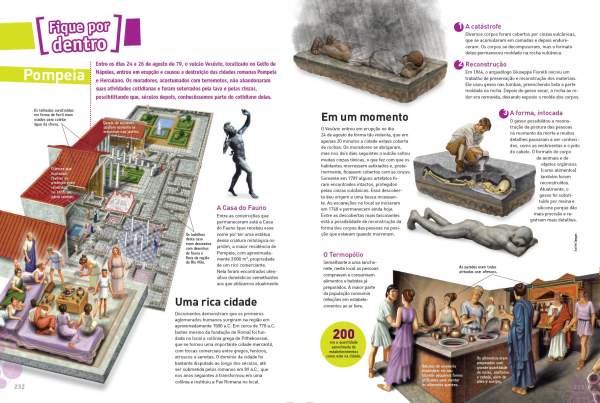
Petroleum, coal, natural gas, hydroelectric, solar, geothermal, wind, nuclear, biofuel and even wastes are energy sources represented in the Fontes de Energía (Sources of energy) infographic, published in the Fique por dentro (Look inside) section of the Tempo de Ciências (Science Time) book of 9th year of Basic Education II. Editora do Brasil added a table with the world energy supply.
Page(s): 242-243
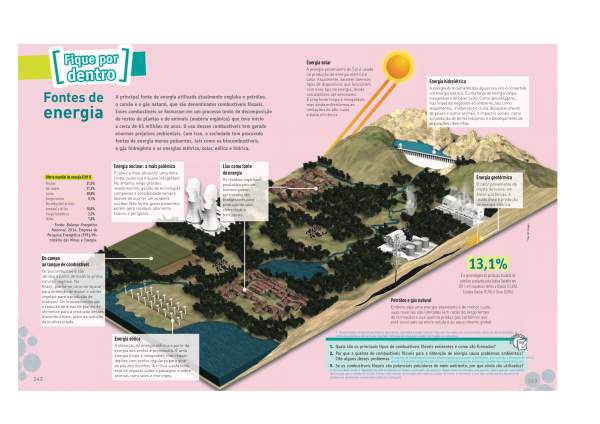
The infographic that shows the operation of the Maglev train (an acronym for Magnetic Levitation Tranport) was selected by Editora do Brasil to appear in its 9th year Tempo de Ciências (Science Time) school manual, with some minor modifications, derived from the publisher's pedagogical plan. The Maglev train works by means of a magnetic levitation system, produced by magnets that support and propel the train; this system prevents rubbing and friction. Thanks to this, the train can reach speeds of over 500 km/h. It is also a quieter and smoother means of transport than conventional trains in railroads. The Chinese city of Shanghai was the first to have a commercially operational Maglev train, which travels the 30 km that separate the city from the airport in 7 minutes.
Page(s): 220-221

Optical fiber has been an essential element for the internet revolution at the end of the 20th century. Its success lies in its flexibility and its ability to transmit massive amounts of data at high speed and over long distances, over cables which have the thickness of a hair. Editora do Brasil inserted this infographic which describes Optical fiber’s operation, advantages and disadvantages, in the textbook Tempo de Ciências (Science Time) for the 9th year of Basic Education II.
Page(s): 194-195
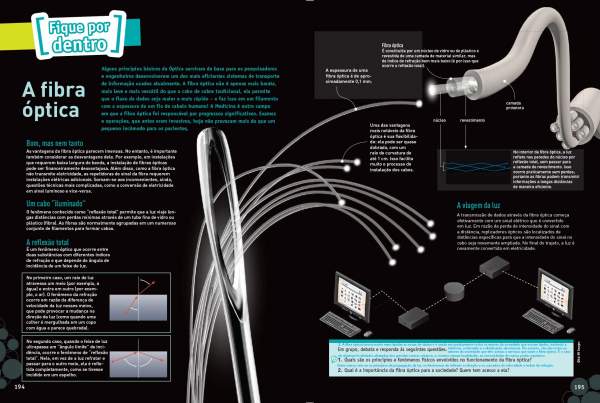
Invented by the Scotsman James Watt in 1769, the steam engine revolutionized the world and introduced humans to the industrial age. The infographic of this powerful device was published in one of the sections Fique por dentro (Look inside), reserved for this kind of graphic material, of the Tempo de Ciências (Science Time) school manual for the 9th year of Editora do Brasil. The original image hardly underwent more modifications other than the inclusion of the text dedicated to the exercises for the student and the elimination of the drawing of the locomotive in the Aplicaçóes da época (Applications of the time) column.
Page(s): 156-157
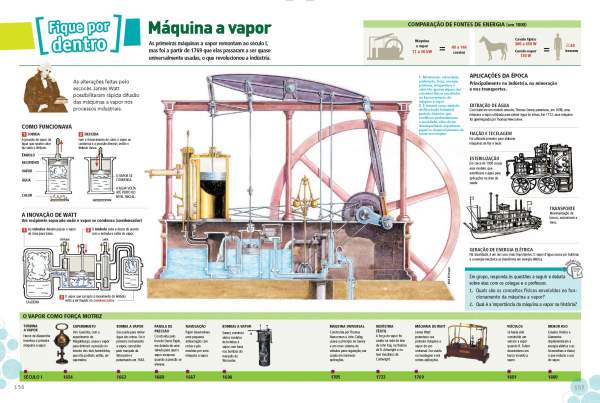
The infographic, published by Editora do Brasil, appeared in the Tempo de Ciências (Science Time) school manual for 9th year. In addition to proposing exercises for the student, the editor also emphasized the pedagogical and practical nature of the image in favor of ecology and the environment, introducing new graphic and text elements, such as photographs of a composter, of recycling containers differentiated by colors and of water flow reducers for the taps, as well as tips and recommendations to reduce the consumption of basic water, of electricity and of gas supplies. It also included the bibliographic reference of a specialist as source of the content.
Page(s): 96-97

Copyright © 2025
Designed by Sol90 S.L
